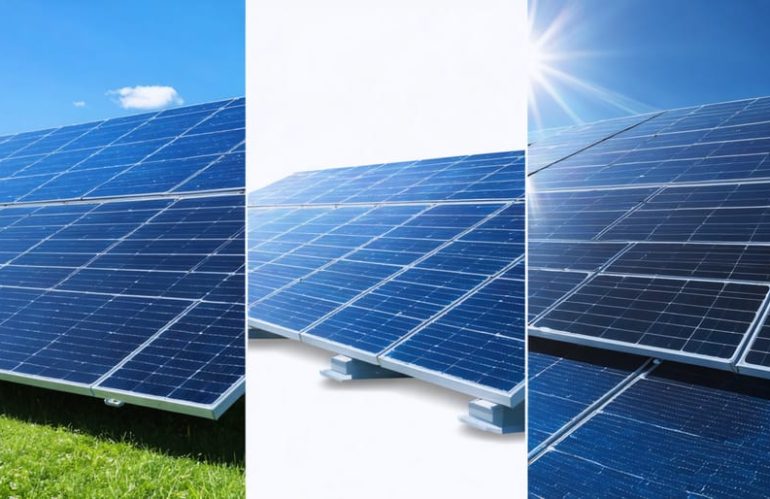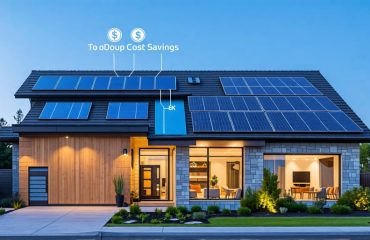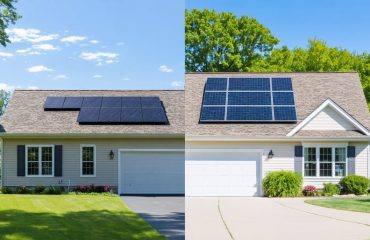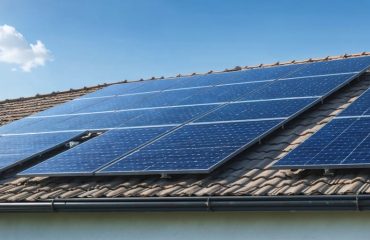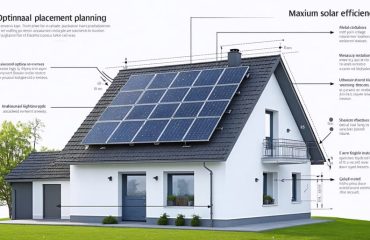Solar panel technology has revolutionized home energy solutions, offering homeowners unprecedented control over their electricity costs and environmental impact. As energy prices continue to climb, choosing the right solar panels has become a crucial decision for sustainable-minded homeowners. From high-efficiency monocrystalline panels that maximize limited roof space to budget-friendly polycrystalline options that deliver reliable performance, today’s market offers diverse solutions for every home and budget. This comprehensive comparison cuts through the technical jargon to explore the key differences between major solar panel types, their real-world performance, and the practical benefits each brings to your home. Whether you’re prioritizing maximum energy production, aesthetic appeal, or long-term value, understanding these distinctions will help you make an informed investment in your home’s energy future.
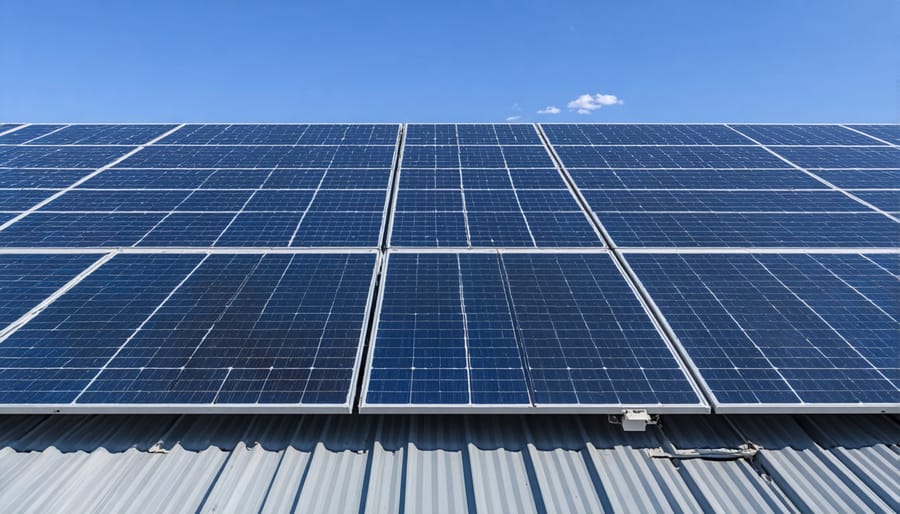
The Three Main Types of Solar Panels
Monocrystalline: The Premium Choice
Monocrystalline solar panels represent the gold standard in solar technology, offering the highest efficiency rates available in today’s market. When examining the key differences between solar panels, monocrystalline stands out for its impressive 15-22% efficiency rating. These panels are crafted from pure silicon crystals, resulting in their characteristic dark black appearance and superior performance.
While they come with a higher upfront cost, typically 10-15% more than other options, monocrystalline panels often prove more cost-effective in the long run. Their superior efficiency means you’ll need fewer panels to meet your energy needs, making them perfect for homes with limited roof space. They also perform exceptionally well in warm weather and maintain high efficiency even in low-light conditions.
These panels are ideal for homeowners seeking maximum energy production from minimal space, those living in regions with variable weather conditions, or anyone planning a long-term investment in their home’s energy future. Their sleek, uniform appearance also adds to their appeal, making them a popular choice for design-conscious homeowners.
Polycrystalline: The Budget-Friendly Option
Polycrystalline solar panels offer an excellent balance between performance and affordability, making them a popular choice for budget-conscious homeowners. These panels are created by melting multiple silicon crystals together, resulting in their distinctive blue, somewhat speckled appearance. While they may be slightly less efficient than their monocrystalline counterparts (typically 15-17% efficiency), the difference in real-world performance is often minimal for most residential applications.
The main advantage of polycrystalline panels lies in their cost-effectiveness. They’re generally 10-15% cheaper than monocrystalline options, allowing homeowners to install larger systems for the same budget. This makes them particularly attractive for homes with ample roof space where maximum efficiency per square foot isn’t the primary concern.
These panels perform reliably in most climate conditions, though they may experience a slight decrease in efficiency during extremely hot weather. For homeowners in moderate climates looking to maximize their return on investment, polycrystalline panels often provide the sweet spot between initial cost and long-term energy production, making them an intelligent choice for residential solar installations.
Thin-Film: The Flexible Solution
Thin-film solar panels represent a revolutionary step in solar technology, offering unique advantages that set them apart from traditional panels. These ultra-slim panels are remarkably flexible and lightweight, making them perfect for unconventional installations on curved surfaces or weight-restricted roofs. Their adaptability allows for creative mounting solutions, from rolling them out on flat commercial roofs to integrating them into building materials.
What makes thin-film panels particularly appealing is their performance in less-than-ideal conditions. They maintain better efficiency in high temperatures and partial shade compared to conventional panels. They also perform well in low-light conditions, making them suitable for cloudy climates or east/west-facing installations.
However, it’s important to note that thin-film panels typically have lower efficiency rates than their crystalline counterparts, meaning you’ll need more surface area to generate the same amount of power. While they’re often more affordable per panel, the additional space requirement can impact overall installation costs. Despite these limitations, their versatility and improving technology make them an increasingly attractive option for specific applications, especially in commercial settings or architectural designs where traditional panels aren’t practical.
Key Factors That Matter Most
Efficiency Ratings Explained
Solar panel efficiency ratings tell you how effectively a panel converts sunlight into electricity. Most residential solar panels available today range from 15% to 23% efficiency, meaning they convert that percentage of received sunlight into usable power. While these numbers might seem low, they represent significant technological advances in solar technology.
For homeowners, a higher efficiency rating typically means you’ll need fewer panels to meet your energy needs. A 20% efficient panel will generate more power in the same space than a 15% efficient panel. This becomes particularly important if you have limited roof space or want to maximize power generation from your available area.
However, efficiency isn’t everything. While higher-efficiency panels produce more power per square foot, they often come with a higher price tag. When choosing panels, consider your specific situation: if you have plenty of roof space, slightly less efficient but more affordable panels might be the better choice. If space is limited or you want to maximize production, investing in higher-efficiency panels could be worth the extra cost.
The key is finding the sweet spot between efficiency, cost, and your energy needs.
Cost vs. Performance
When comparing solar panels, the relationship between cost and performance is crucial for making a smart investment. While premium monocrystalline panels typically come with higher solar panel installation costs, they often deliver superior efficiency rates of 20-23%, making them cost-effective in the long run, especially for limited roof space. Polycrystalline panels offer a middle-ground solution, with efficiency rates of 15-17% at a more moderate price point, making them popular among budget-conscious homeowners.
Thin-film panels are the most affordable option upfront but require larger installation areas due to their lower efficiency (10-12%). However, they can be an excellent choice for large commercial installations or areas with consistent high temperatures, as they maintain better performance in hot conditions.
When evaluating cost-effectiveness, consider the watts per dollar ratio alongside factors like available space, local climate, and warranty length. Premium panels often justify their higher initial cost through better durability, longer warranties, and higher energy production over their lifetime.
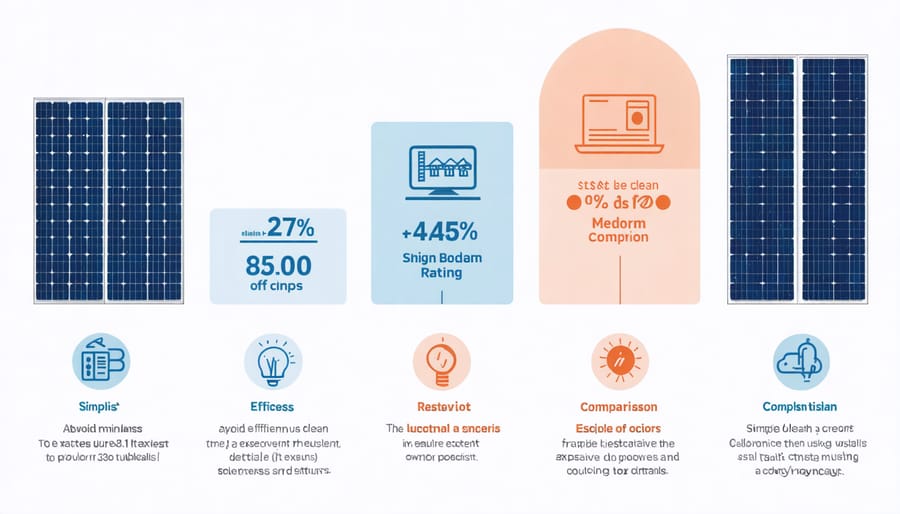
Durability and Warranties
When investing in solar panels, durability and warranty coverage are crucial factors to consider. Most modern solar panels have a life expectancy of 25-30 years, though they can continue producing energy beyond this timeframe at slightly reduced efficiency. Monocrystalline panels typically offer the longest lifespans, with many manufacturers providing 25-year performance warranties and 10-15 year product warranties.
Polycrystalline panels generally come with similar warranty terms but may experience slightly faster degradation rates. Thin-film panels usually carry shorter warranty periods, typically 10-15 years, reflecting their different technology and construction methods.
Quality solar panels are built to withstand severe weather conditions, including hail, heavy snow, and high winds. Many manufacturers also offer specific guarantees for their mounting systems and help protect panels from wildlife. The annual degradation rate for premium panels averages just 0.3-0.5%, meaning they’ll still produce about 85% of their original output after 25 years.
When comparing warranties, look beyond the years covered and examine the guaranteed performance levels and what exactly is included in the coverage.
Real-World Performance
Temperature and Weather Impact
Weather conditions and temperature play a crucial role in how well your solar panels perform. Most solar panels work best in cool, sunny conditions, typically around 77°F (25°C). When temperatures rise above this sweet spot, panels gradually become less efficient, losing about 0.5% efficiency for every degree increase.
Monocrystalline panels generally handle high temperatures better than polycrystalline ones, maintaining better efficiency during hot summer days. However, both types are engineered to withstand extreme weather conditions, including heavy rain, snow, and hail.
Thin-film panels, while slightly less efficient overall, tend to perform better in very hot climates and maintain more consistent output when partially shaded. They’re also less affected by high temperatures than crystalline panels, making them a good choice for consistently hot regions.
Snow and ice can temporarily reduce panel output, but most installations are tilted to allow snow to slide off naturally. Modern panels are built to handle snow loads, and the bright white surface of snow can actually boost performance through reflected light once it melts.
Surprisingly, cold weather can improve solar panel efficiency, as long as panels remain unobstructed. The cool temperatures help the panels operate more efficiently, though shorter winter days mean less overall production time. Regular rain actually helps keep your panels clean, maintaining their optimal performance.
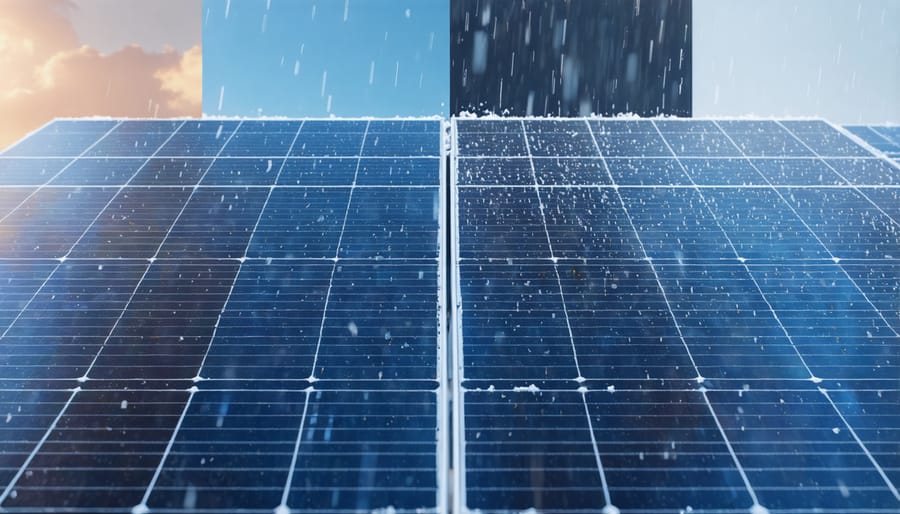
Space Requirements
When choosing solar panels for your home, space efficiency is a crucial factor to consider. Different types of solar panels require varying amounts of roof or ground space to generate the same amount of power. Monocrystalline panels typically offer the highest space efficiency, requiring about 100-150 square feet to generate 1 kilowatt of power. This makes them an excellent choice for homes with limited roof space.
Polycrystalline panels, while more affordable, need approximately 130-170 square feet for the same power output. This slightly larger footprint might not be an issue for homes with ample roof space, but it’s worth considering if space is at a premium.
Thin-film panels require the most space, needing roughly 175-200 square feet per kilowatt. However, their flexibility and lighter weight make them suitable for unique installation situations, such as curved surfaces or structures that can’t support heavier panels.
To put this in perspective, an average home requiring a 6kW system would need:
– Monocrystalline: 600-900 square feet
– Polycrystalline: 780-1,020 square feet
– Thin-film: 1,050-1,200 square feet
Remember that these measurements are approximate and can vary based on factors like panel brand, efficiency ratings, and local sunlight conditions. Working with a solar installer can help you determine the exact space requirements for your specific situation.
Making Your Choice
Selecting the right solar panels for your home doesn’t have to be overwhelming. By following a systematic approach, you can make an informed decision that aligns with your needs and budget. Start by evaluating your available roof space and its orientation to determine the most efficient panel layout. Next, calculate your household’s average energy consumption to understand the system size you’ll need.
Consider your local climate conditions, as some panel types perform better in specific environments. For example, if you live in a hot climate, temperature-resistant panels might be worth the extra investment. Your budget will also play a crucial role, but remember to think long-term – higher efficiency panels may cost more initially but could provide better returns over time.
Don’t forget to research local installers and compare their warranties and service packages. Look for certifications and read customer reviews to ensure you’re working with reputable professionals. If traditional panels don’t suit your home’s aesthetic or structural requirements, explore solar panel alternatives that might better match your needs.
Finally, review available incentives and tax credits in your area, as these can significantly impact your final costs. Many states offer additional benefits beyond federal incentives, making certain panel types more attractive financially. Remember to get multiple quotes and compare them based on efficiency ratings, warranty terms, and total cost of ownership rather than just the initial price tag.
Keep these factors in mind while evaluating different options, and you’ll be well-equipped to choose a solar panel system that provides optimal performance and value for your home.
Choosing the right solar panels for your home doesn’t have to be overwhelming. By understanding the key differences between monocrystalline, polycrystalline, and thin-film panels, you can make an informed decision that aligns with your specific needs and budget. Remember that efficiency, cost, and space requirements are the primary factors to consider, with monocrystalline panels offering the highest efficiency but at a premium price, while polycrystalline provides a cost-effective middle ground.
To move forward with your solar journey, start by assessing your roof space and energy needs. Then, get quotes from multiple certified installers who can recommend specific panel types based on your location and requirements. Consider warranty terms and manufacturer reputation as part of your decision-making process. Don’t forget to research local incentives and tax credits that can significantly reduce your initial investment.
The solar industry continues to evolve, with new technologies emerging regularly. While this guide provides a solid foundation for your research, consulting with solar professionals will help ensure you make the best choice for your home’s sustainable energy future.

